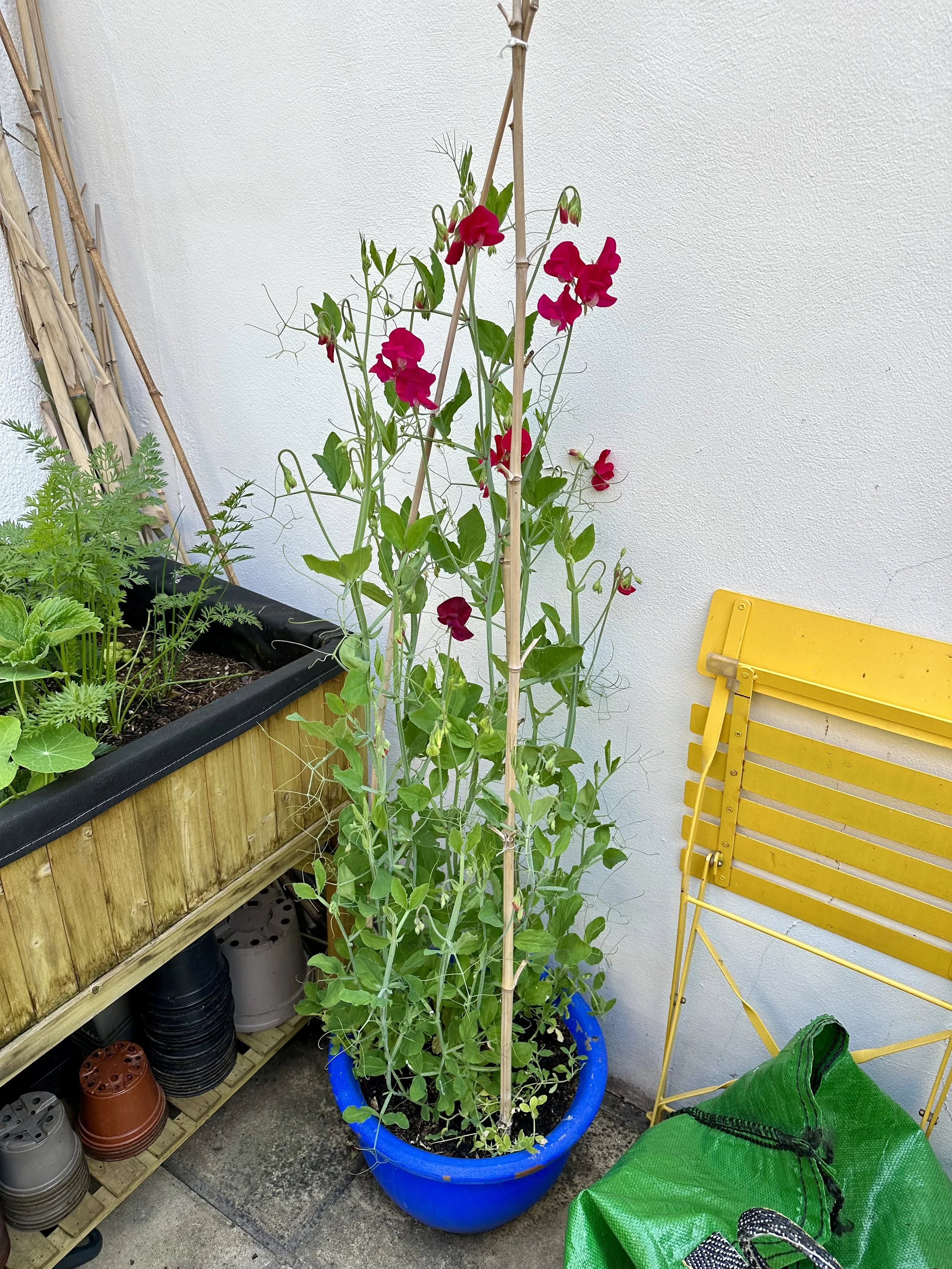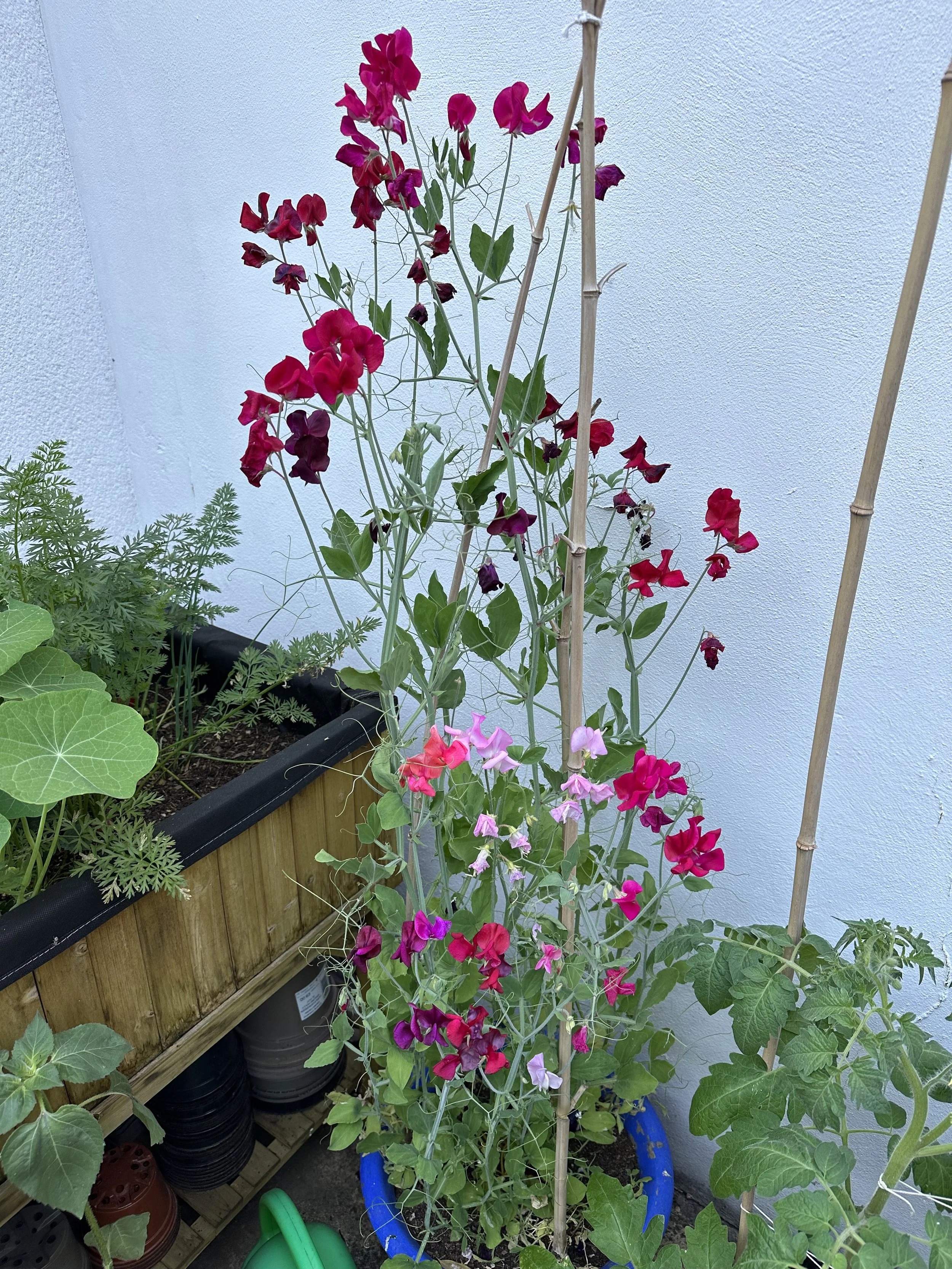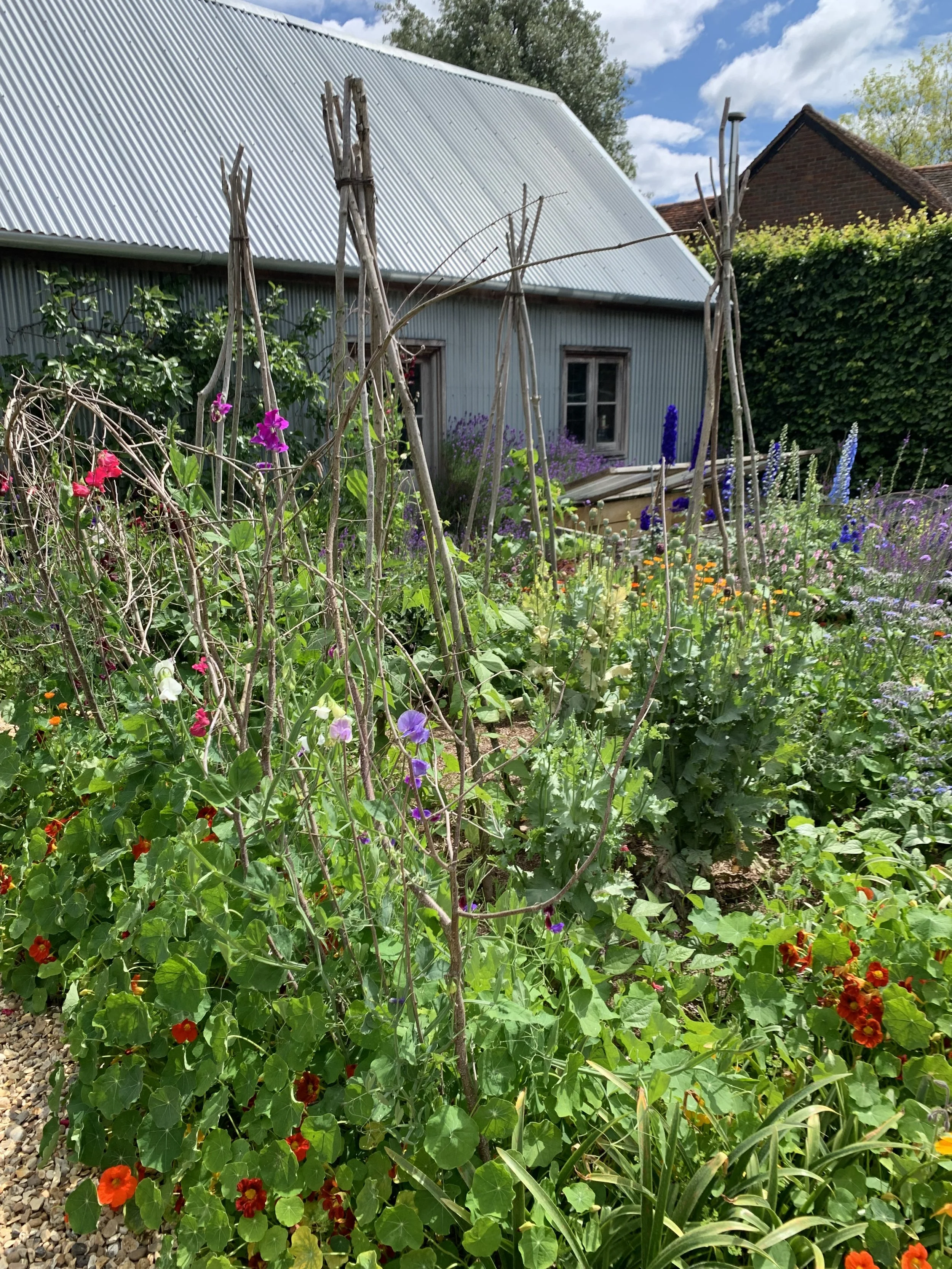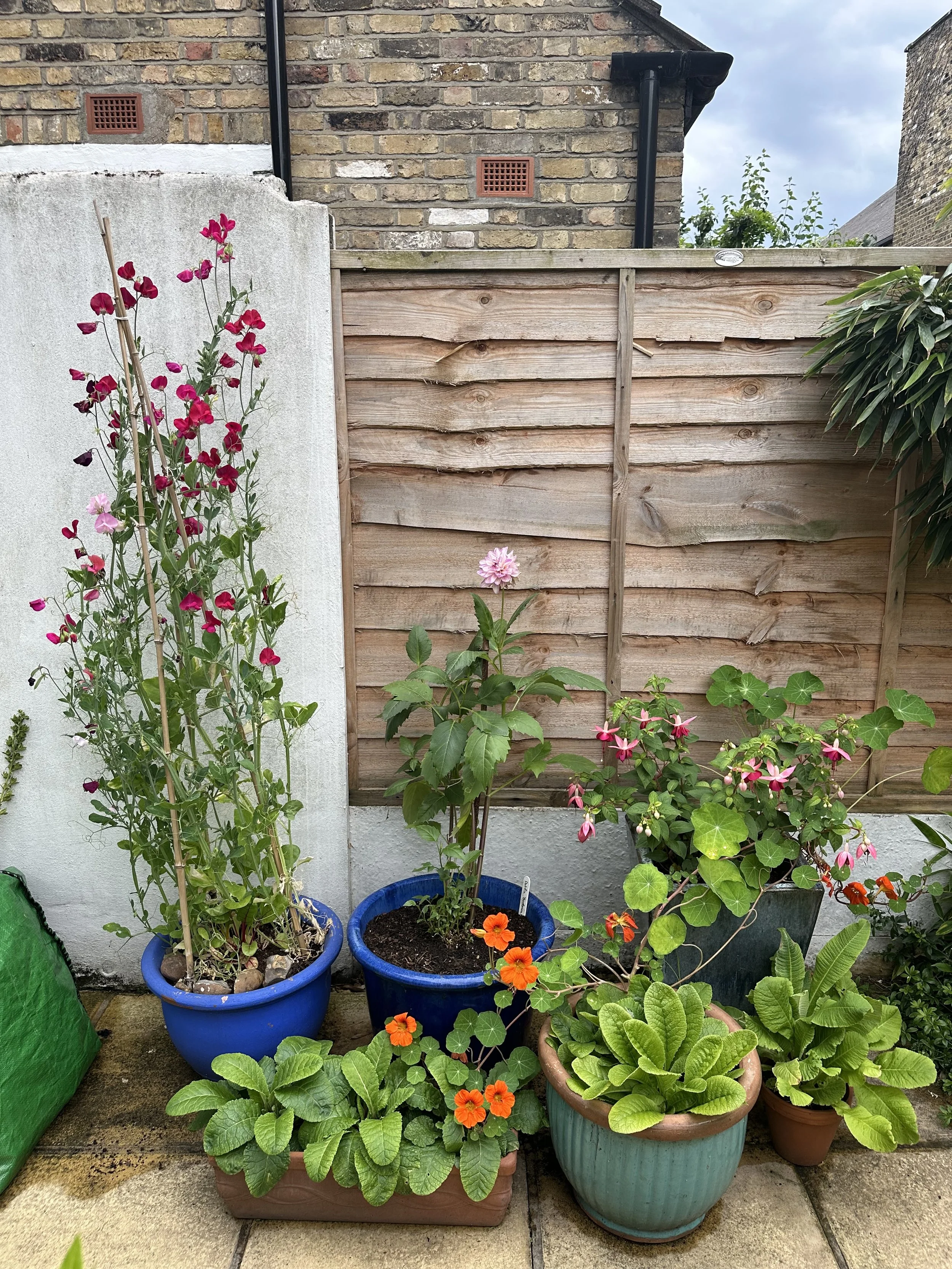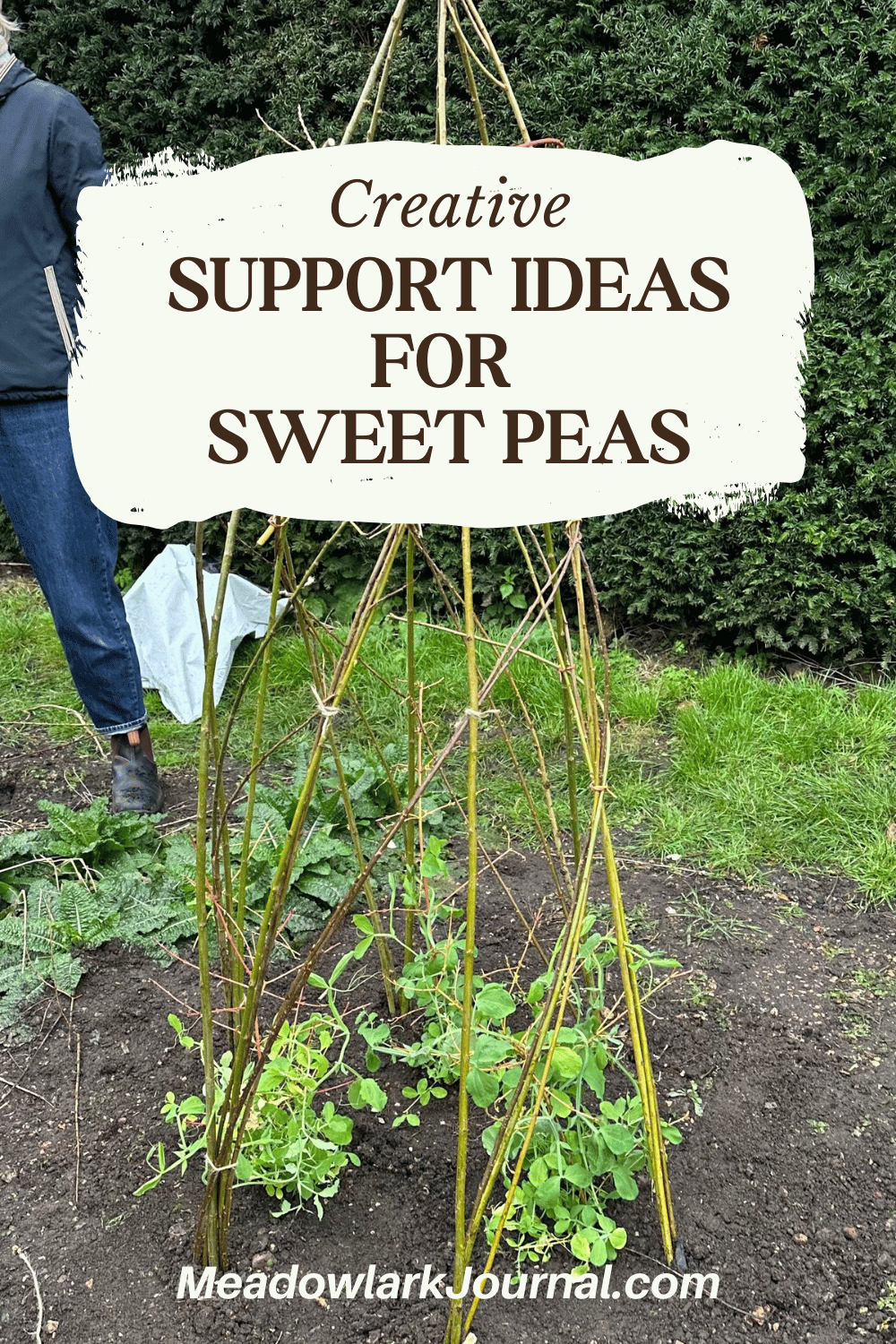Creative Support Ideas for Thriving Sweet Peas
This website is reader-supported - thank you! This post may contain affiliate links. As an Amazon Associate, I earn from qualifying purchases at no extra cost to you.
If you're growing sweet peas, you already know they're pretty special.
These flowers aren't just known for their incredible scent; they're climbers that need a bit of help to really show off.
That's what this guide is all about - finding the best ways to support your sweet peas.
We'll look at everything from the tried-and-true classics to some clever DIY options you might not have thought of.
Here you'll find some creative ideas to get your sweet peas climbing high and looking great.
Learn more about growing sweet peas in my guides:
Best Support for Sweet Peas
1. Bamboo Canes and String
Bamboo Canes:
Select canes that are sturdy and at least 6-8 feet tall.
The height is important as sweet peas are vigorous climbers.
Here are the bamboo canes I recommend:
Garden String:
Use garden twine or string that is strong but not too thick.
It should be able to withstand outdoor conditions without deteriorating quickly.
Here is the garden string I recommend using:
Setting Up the Structure
Preparation:
Start by deciding on the location for your sweet peas.
They should be planted in a spot that receives plenty of sunlight.
A south-facing or west-facing spot is best.
Prepare the soil by loosening it and adding some compost or well-rotted manure to provide nutrients.
Teepee Structure:
Take 3 to 6 bamboo canes and push them into the ground, forming a circle about 18-24 inches in diameter.
Gather the tops and tie them securely together using garden string. This forms a wigwam structure.
Wrap the string around the canes at various heights to create horizontal support lines.
Grid Pattern:
For a more formal look or for row planting, place bamboo canes at intervals of about 12-18 inches along the row.
Secure the canes in the ground so they stand upright.
Run garden string between the canes, tying it at different heights to create a grid.
The spacing between strings can be about 6-12 inches.
Planting and Training Sweet Peas
Plant sweet pea seeds or seedlings at the base of each cane. To learn how to do this, check out my guide: Sweet Peas: When to Plant Seeds.
As they grow, gently guide the tendrils of the sweet peas onto the canes and the string. They will naturally start to climb.
Regularly check and gently tie in any wayward shoots, guiding them to the support structure.
Maintenance Tips
Keep the soil moist but not waterlogged.
For more watering tips, check out my guides Water Butts: Sustainable Water Storage for Your Garden and How to Use Watering Globes.
Pinch out the tips of the plants when they reach about 8 inches tall to encourage bushy growth.
Remove any weeds that might compete with your sweet peas for nutrients.
Advantages of Bamboo Canes and String
Natural Aesthetics: Bamboo blends seamlessly into the garden, providing a natural and unobtrusive support.
Flexibility: This method can be adapted to fit various garden sizes and styles.
Cost-Effective: Bamboo canes and garden string are relatively inexpensive and can often be reused for several seasons.
Learn more about growing sweet peas in my guides:
For more flower garden tips, check out my guide:
2. Sweet Pea Trellis
Wooden Trellis:
These classic trellises provide a natural look that blends well with garden surroundings.
They come in various designs, like lattice, fan, or grid patterns, and can be painted or stained to match your garden's design.
Here is my favorite wooden trellis for sweet peas:
Metal Trellis:
Metal trellises offer a more modern and durable option.
They are great because they can withstand harsh weather conditions.
Their sturdiness makes them ideal for supporting the vigorous growth of sweet peas.
Expandable Trellis:
These are super versatile and can be adjusted to fit different spaces.
Made from light metal, they're perfect if you want a flexible support system that can change with your gardening needs.
Installing a Sweet Pea Trellis
Location: Choose a spot that receives ample sunlight since sweet peas thrive in bright conditions.
Soil Preparation: Before installing the trellis, prepare the soil by adding compost or a slow-release fertilizer to nourish the sweet peas.
To amend the soil, check out my guide A Simple Recipe for Rich Compost Tea.
Installation:
For wooden or metal trellises, dig holes at the appropriate points where the trellis legs will go.
Ensure the trellis is vertical and stable.
Bury the legs of the trellis about 12-18 inches deep for stability, and backfill the hole with soil, tamping down firmly.
For expandable trellises, secure them against a wall or fence, ensuring they are firmly attached and can support the weight of growing plants.
Planting and Training
Plant sweet pea seeds or seedlings near the base of the trellis.
Space them about 6 inches apart to ensure adequate room for growth.
As the plants grow, gently guide them onto the trellis.
Their tendrils will naturally grasp and climb the structure.
Regularly check and adjust the position of the plants, especially during rapid growth phases.
Maintenance and Care
Water the sweet peas regularly, ensuring consistent soil moisture.
Regularly check the trellis for any signs of wear or instability, especially after harsh weather.
Apply a balanced liquid fertilizer every few weeks during the growing season to promote healthy blooms.
Here is the fertilizer I recommend for sweet peas:
Benefits of Using a Trellis
Aesthetic Appeal: Trellises can be a beautiful addition to your garden, serving as a focal point.
Space Efficient: They allow you to grow sweet peas vertically, saving valuable garden space.
Improved Plant Health: Elevating sweet peas off the ground reduces the risk of soil-borne diseases and improves air circulation around the plants.
Learn more about growing sweet peas in my guide:
3. Willow and Natural Supports
Using Willow Supports
Materials: Willow branches are ideal for sweet pea supports due to their flexibility, strength, and natural look.
Choose branches that are long enough for sweet peas to climb, typically around 6-8 feet.
Creating the Structure:
Willow Wigwam: Similar to a bamboo wigwam, you can create a wigwam structure using willow branches.
Insert the thicker end of the branches into the ground, then bend and tie the tops together.
The flexibility of willow makes it easier to create curved shapes.
Willow Trellis: For a more permanent structure, weave willow branches horizontally and vertically to form a trellis.
This can be attached to a wall or used as a freestanding structure in the garden.
Natural Branch Supports
Materials: Look for sturdy branches from pruning or fallen trees.
They should be strong enough to support the weight of growing sweet peas.
Building the Support:
Branch Lattice: Create a lattice structure by tying branches together at the intersections. This can be leaned against a wall or fence.
Freestanding Structures: Use thicker branches as the main uprights and weave thinner branches between them to create a standalone support.
Installation and Planting
Installation: Ensure that any structure made from willow or natural branches is securely anchored in the ground to withstand wind and the weight of the plants.
Planting: Plant sweet pea seeds or seedlings at the base of the support.
Space them out evenly to allow for healthy growth.
Advantages of Willow and Natural Supports
Aesthetic Appeal: These supports blend beautifully with the garden, offering a more natural and rustic look.
Eco-Friendly: Using willow and natural branches is a sustainable choice, especially if sourced from your own garden or local areas.
Versatility: You can create various shapes and designs, allowing for customization to fit your garden’s style and space.
Maintenance and Care Tips
Watering: Sweet peas require regular watering, especially during dry spells.
Natural supports do not retain water like metal or plastic, so soil may dry out more quickly.
Feeding: Fertilize your sweet peas regularly to ensure robust growth and abundant flowering.
To learn more about fertilizing, check out my guide Does Fertilizer Go Bad? The Reality of Fertilizer Shelf Life.
Disease and Pest Monitoring: Keep an eye out for signs of pests or diseases.
Good air circulation around natural supports helps in preventing these issues.
Customization and Creativity
Decorative Touches: Enhance your willow or natural supports with decorative elements like string lights.
Combining Materials: For added strength and variety, consider combining willow or branches with other materials like string or wire.
For more tips, check out my guides:
For more flower garden tips, check out my guides:
4. Upcycled Materials
Old Ladders
Usage: An old wooden or metal ladder can be repurposed as a sweet pea support.
Simply stand it up in your garden or lean it against a wall or fence.
Advantages: Ladders have ready-made rungs that sweet peas can cling to as they grow.
This method adds a vintage or rustic charm to your garden.
Installation: Ensure the ladder is securely positioned.
If it's a wooden ladder, consider treating it with a weather-resistant sealant.
Pallet Frames
Usage: Wooden pallets can be transformed into simple, effective trellises.
Disassemble the pallet and use the slats to create a grid or vertical structure.
Advantages: This is a cost-effective and sustainable option.
The natural wood look fits well in any garden setting.
Customization: Paint or stain the pallets for a more personalized touch.
Ensure they are free of any harmful chemicals before use.
Metal Frames
Usage: Repurpose old metal frames, such as bed headboards, garden gates, or even window frames, as unique supports.
Advantages: Metal frames often come with intricate designs that can add an artistic flair to your garden.
They are also durable and weather-resistant.
Preparation: Remove any rust and apply a fresh coat of paint to prevent further corrosion and enhance the look.
Bicycle Wheels
Usage: Old bicycle wheels can be used as creative support structures. Mount them vertically on a pole or against a wall.
Advantages: The spokes of the wheel allow sweet peas to weave through as they grow, creating a fun display.
Installation: Ensure the wheel is securely fixed and won't spin, to provide stable support for the plants.
Plastic Bottles
Usage: Cut the bottoms off large plastic bottles, stack them, and secure around a central pole or stake.
Advantages: This method is great for small spaces and adds a modern, quirky look. It’s also an excellent way to recycle plastic.
Tips: Choose bottles of similar sizes for uniformity. Ensure they are clean and free from labels.
General Tips for Using Upcycled Materials
Stability: Make sure any upcycled structures are stable and strong enough to support the weight of growing sweet peas.
Safety: Remove any sharp edges or hazardous materials.
Weather Resistance: Consider the effects of weather on your materials. Treat wood and metal to prevent decay and rust.
For more tips, check out my guides:
Additional Tips
Height Matters: Sweet peas can grow quite tall.
Ensure your structure is at least 6 feet high for adequate support.
Stability: Make sure your supports are firmly anchored in the ground to withstand wind and the weight of the plants.
Spacing: Allow enough space between plants for air circulation, which helps prevent fungal diseases.
Quick FAQs
Can I grow sweet peas in pots?
Absolutely! Sweet peas can thrive in pots, especially with a suitable support structure like a mini trellis or wigwam.
How often should I water sweet peas?
Sweet peas need consistent moisture.
Water them regularly, especially during dry spells, but avoid waterlogging the soil.
Do sweet peas need a lot of sunlight?
Yes, sweet peas love sunlight.
They thrive best in a spot that receives several hours of direct sunlight daily.
Can sweet peas be used as cut flowers?
Definitely! Sweet peas make beautiful cut flowers.
Regular cutting encourages more blooms.
How do I protect sweet peas from pests?
Keep an eye out for common pests like aphids.
A gentle insecticidal soap or neem oil can help keep them at bay.
When is the best time to harvest sweet pea seeds?
Harvest sweet pea seeds in late summer, when the pods have dried on the plant.
Store them in a cool, dry place for next year.
Wrap-Up
And there you have it - a range of support ideas and gardening tips for your sweet peas that blend functionality with garden design.
Whether you're crafting a DIY masterpiece or going for a more traditional approach, the right support can make all the difference.
Remember, sweet peas are more than just plants; they're a canvas for your gardening creativity.
So, grab those tools, let your imagination run wild, and watch as your sweet peas climb their way to a stunning display.
Here's to a garden that's as unique and vibrant as the flowers in it!
Pin this post to save it for later!
